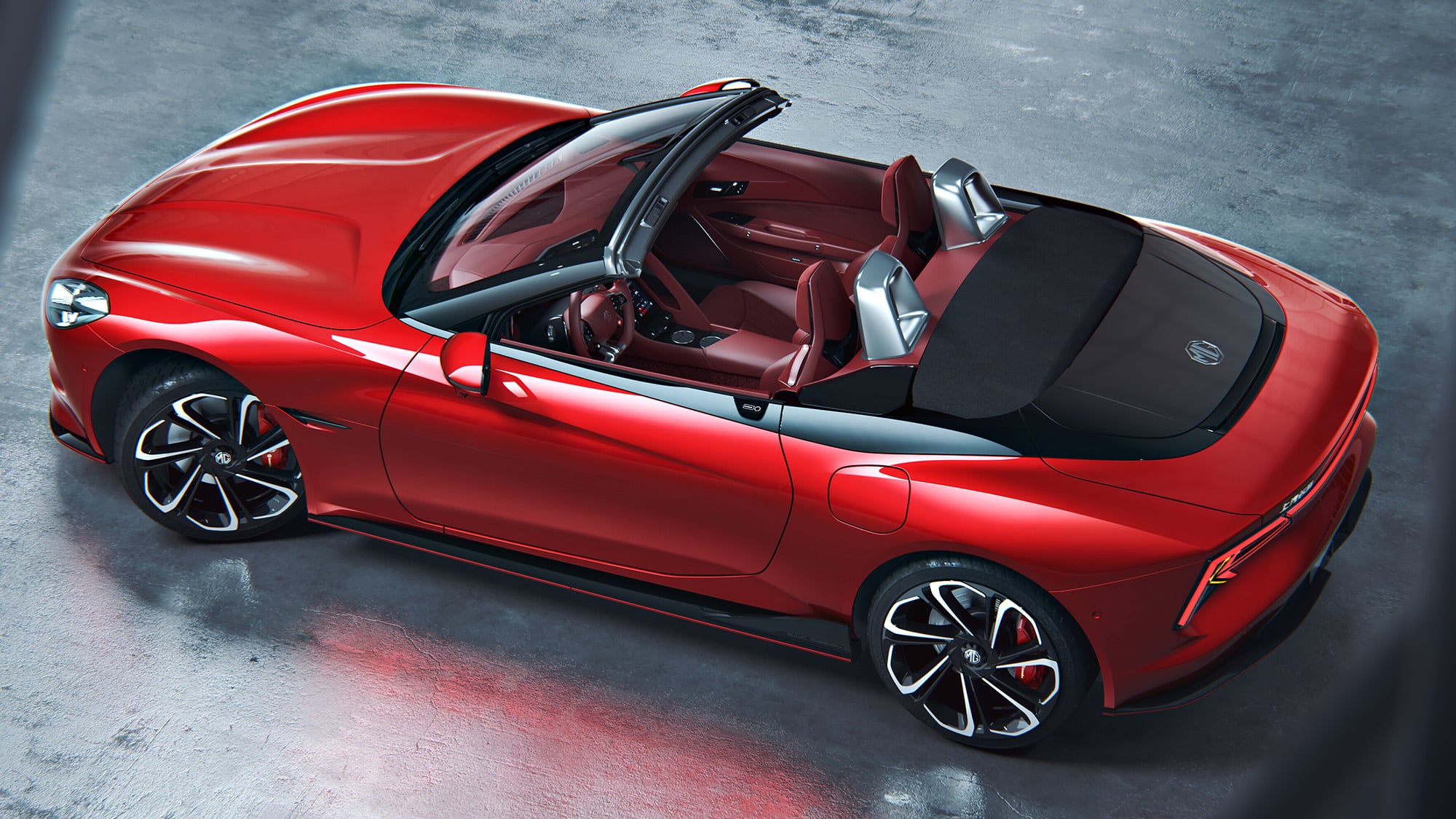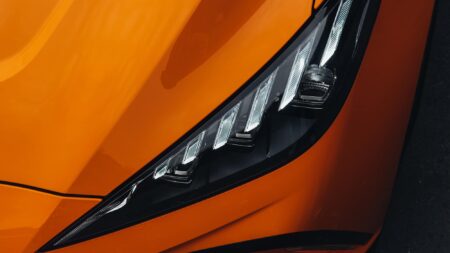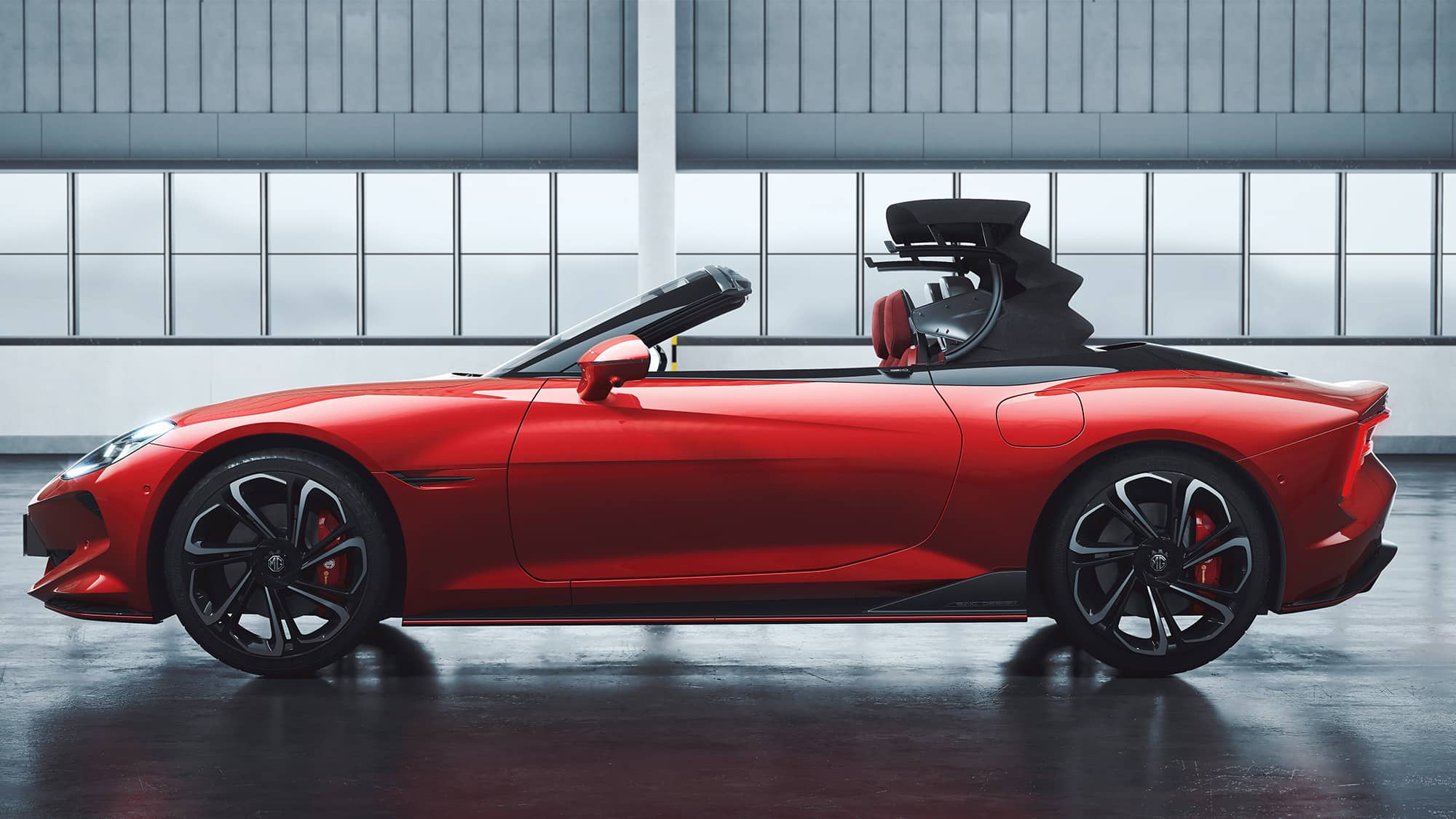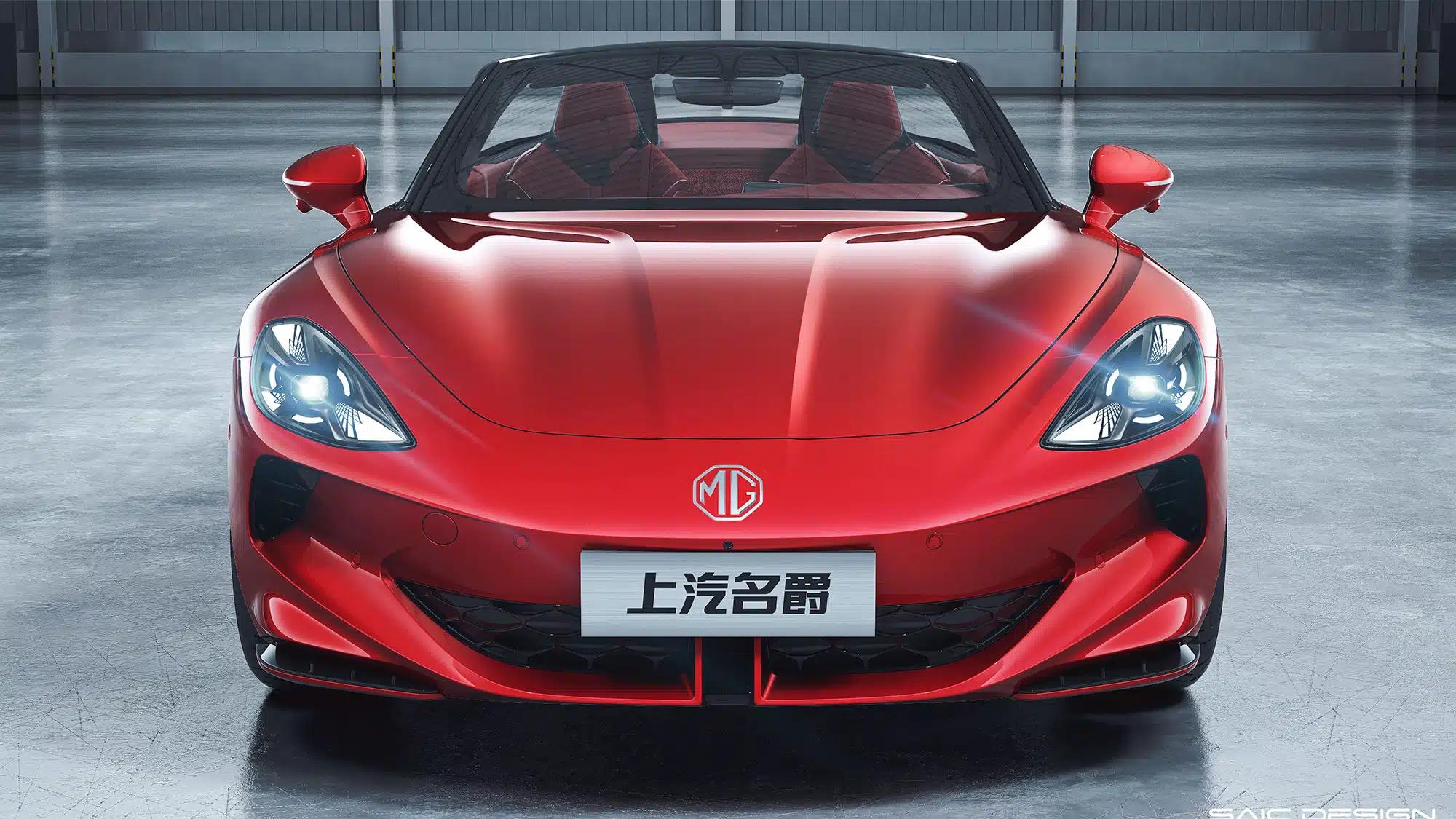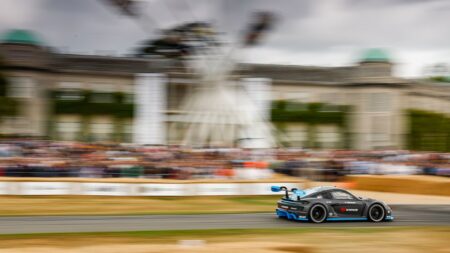Indeed think of all those MGs on which the name was built: the PBs, the K3s, the TCs, MGA, MGB and many others up to an including the MGF. All small, all light, all feeling no need to go chasing ever greater power outputs because back then no one was mistaking fast for fun.
Now consider some of the very few known facts about the Cyberster: it will be available with both one and two electric motors, giving the owner the choice of rear or four-wheel drive. And the less powerful, single motor car will have 309bhp. The all-wheel drive car? Try 536bhp, which is not far short of 911 Turbo territory. Also, and while we’re talking Porsche, this is no pint-sized post-modern Mazda MX-5 rival: it’s bigger than a Boxster.
But the most breathtaking statistic is that the Cyberster weighs 1850kg – if you don’t opt for that extra motor. If you do? A whisper short of two tonnes. Put another way, here is a two-seater convertible MG that weighs a sack of spuds less than an S-class Mercedes-Benz. Time alone will tell how it will drive and how cleverly MG has tried to mitigate such an excess of apparent avoirdupois.
